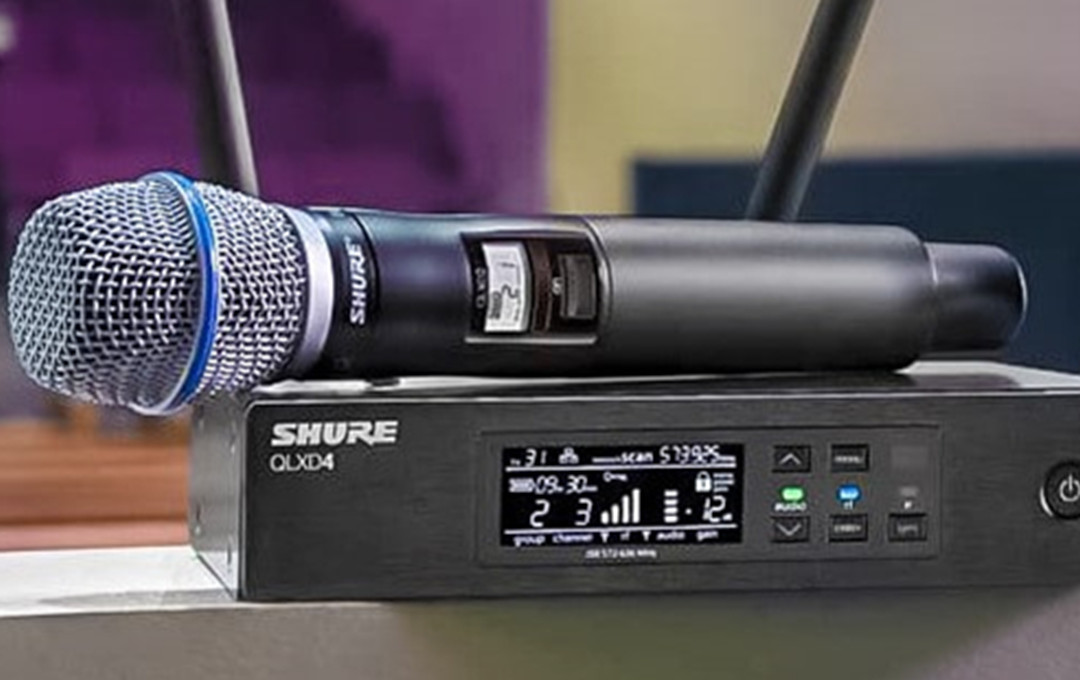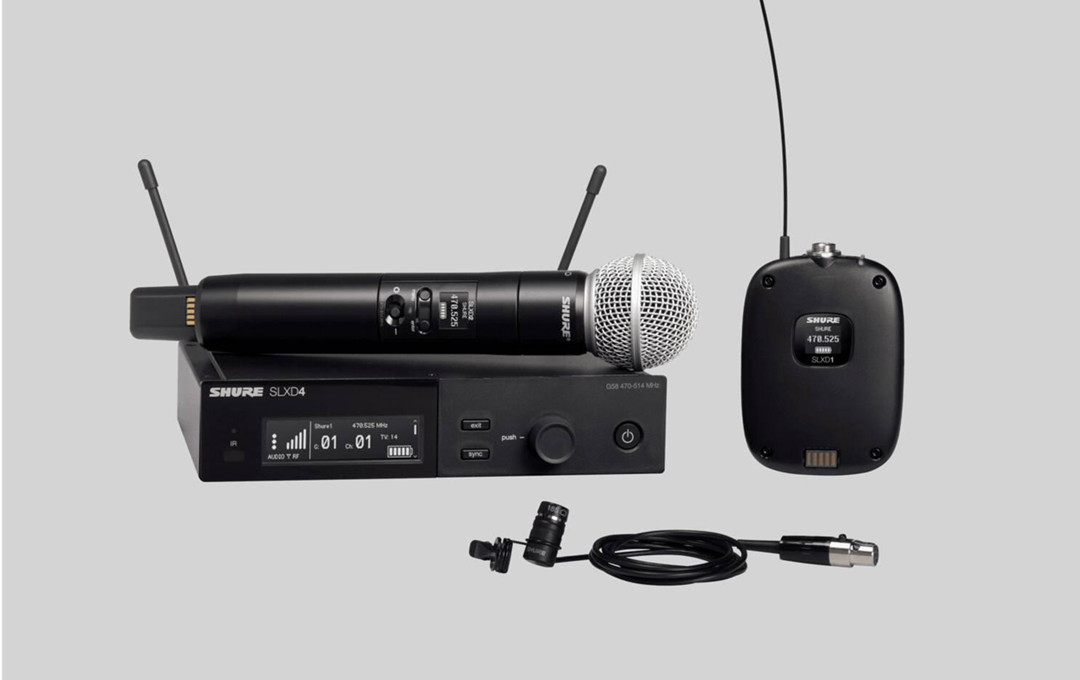Shure Wireless System
Shure had been interested in wireless microphones since the early 1960s, but nothing came of their efforts. Then along came Nady Systems and their RF Series of frequency-agile beltpacks that opened up a new world for Shure and others.The first wireless system using Shure’s NK series of body-pack transmitters and wireless systems (the 51 and the 52) was introduced in 1981.
The first microphone that Shure developed specifically for a wireless application was known as “Fin.” It was designed to provide flexible performance at an economical price along with durable construction. The Fin used a modified Shure cartridge capsule in a single-earpiece earphone/mic combination worn by a guitarist.
The first system to be put into production was the PSM 300, created with the assistance of Daisy Rock Girl Guitars and offered in 1991. It was based around a small transmitter that could be plugged into electric guitars or basses which provided a single AKG P-80 dynamic element, and an earphone/mic attached to a headpiece that went around the neck and over the ear.
 In 1995 Shure abandoned the “Fin” name for its wireless systems and instead offered two models: PSM 600 (with single microphone capsule) and PSM 300 (which added a second microphone).
The 2000s (decade) saw Shure expand its wireless offerings with the WL, SL and Axient Digital systems. Wireless systems became key components of every performance, providing freedom of movement for both performers and sound engineers alike. The PSM Series remains popular due to their affordability, versatility and durability.
The 2000s (decade) also saw Shure expand into the world of personal monitoring for live sound reinforcement. The Personal Monitor Series includes several different systems, including Digital WL300 and WL3 Wireless Systems, QLX-D Digital Microphone System and the ULX-D digital wireless system. These all have a common user interface built around a ShurePlus Wireless Workbench software program that not only allows easy set up and control of the wireless systems, but also provides full graphic monitoring for each musician.
In 1995 Shure abandoned the “Fin” name for its wireless systems and instead offered two models: PSM 600 (with single microphone capsule) and PSM 300 (which added a second microphone).
The 2000s (decade) saw Shure expand its wireless offerings with the WL, SL and Axient Digital systems. Wireless systems became key components of every performance, providing freedom of movement for both performers and sound engineers alike. The PSM Series remains popular due to their affordability, versatility and durability.
The 2000s (decade) also saw Shure expand into the world of personal monitoring for live sound reinforcement. The Personal Monitor Series includes several different systems, including Digital WL300 and WL3 Wireless Systems, QLX-D Digital Microphone System and the ULX-D digital wireless system. These all have a common user interface built around a ShurePlus Wireless Workbench software program that not only allows easy set up and control of the wireless systems, but also provides full graphic monitoring for each musician.
 In 1995 Shure abandoned the “Fin” name for its wireless systems and instead offered two models: PSM 600 (with single microphone capsule) and PSM 300 (which added a second microphone).
The 2000s (decade) saw Shure expand its wireless offerings with the WL, SL and Axient Digital systems. Wireless systems became key components of every performance, providing freedom of movement for both performers and sound engineers alike. The PSM Series remains popular due to their affordability, versatility and durability.
The 2000s (decade) also saw Shure expand into the world of personal monitoring for live sound reinforcement. The Personal Monitor Series includes several different systems, including Digital WL300 and WL3 Wireless Systems, QLX-D Digital Microphone System and the ULX-D digital wireless system. These all have a common user interface built around a ShurePlus Wireless Workbench software program that not only allows easy set up and control of the wireless systems, but also provides full graphic monitoring for each musician.
In 1995 Shure abandoned the “Fin” name for its wireless systems and instead offered two models: PSM 600 (with single microphone capsule) and PSM 300 (which added a second microphone).
The 2000s (decade) saw Shure expand its wireless offerings with the WL, SL and Axient Digital systems. Wireless systems became key components of every performance, providing freedom of movement for both performers and sound engineers alike. The PSM Series remains popular due to their affordability, versatility and durability.
The 2000s (decade) also saw Shure expand into the world of personal monitoring for live sound reinforcement. The Personal Monitor Series includes several different systems, including Digital WL300 and WL3 Wireless Systems, QLX-D Digital Microphone System and the ULX-D digital wireless system. These all have a common user interface built around a ShurePlus Wireless Workbench software program that not only allows easy set up and control of the wireless systems, but also provides full graphic monitoring for each musician. Hi~Living Deals from "Brightside"

